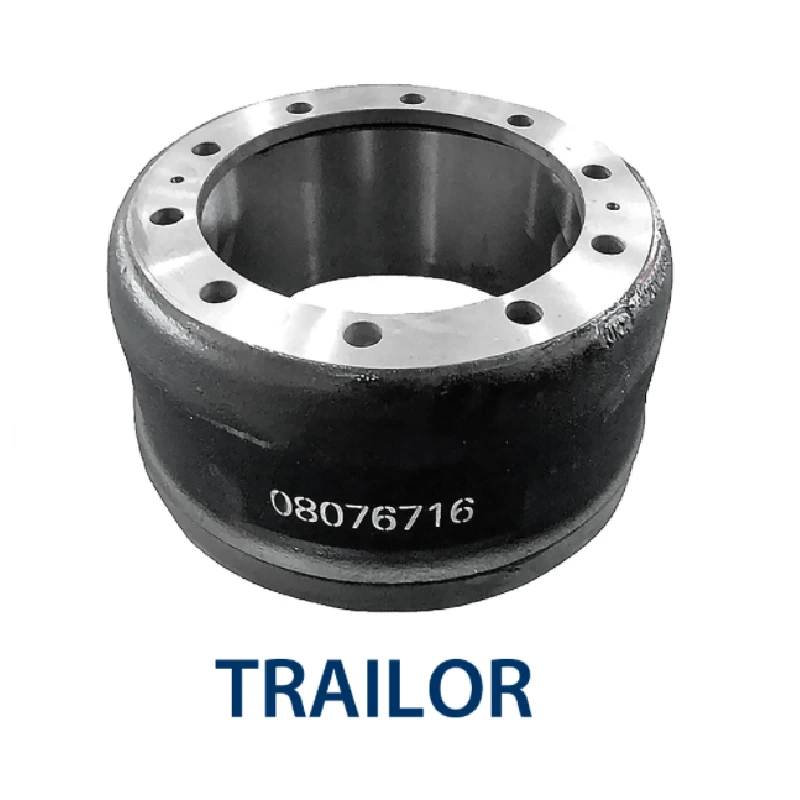Oct . 02, 2024 19:01 Back to list
Converting Brake Systems from Drum to Disc for Enhanced Performance and Safety
Brake Drum to Disc Conversion Enhancing Vehicle Performance
The braking system of a vehicle plays a crucial role in ensuring safety and performance. Traditionally, many older vehicles were equipped with drum brakes, particularly on the rear wheels. In recent years, there has been a significant trend towards converting brake drum systems to disc brakes. This article explores the benefits, considerations, and the process related to brake drum to disc conversion.
Advantages of Disc Brakes Over Drum Brakes
1. Improved Stopping Power Disc brakes provide superior stopping power compared to drum brakes. The design allows for better heat dissipation, reducing the risk of brake fade during prolonged use, a common issue with drum brakes that can lead to decreased performance.
2. Enhanced Safety The reliable performance of disc brakes under various conditions gives them an edge when it comes to safety. They respond more consistently in emergency braking situations, weather conditions, and when towing loads.
3. Maintenance and Longevity Drum brakes typically require more maintenance as they have more components that can wear out, such as springs and adjusters. Disc brakes, on the other hand, are easier to inspect and replace, resulting in lower long-term maintenance costs.
4. Better Handling and Performance The distribution of weight and braking forces in disc brake systems allows for better control of the vehicle. This results in improved handling, particularly in high-performance applications or competitive driving scenarios.
Considerations for Conversion
While the advantages of switching to disc brakes are considerable, several factors should be taken into account before undertaking a conversion
1. Compatibility Vehicle models vary widely in their design and architecture. Some vehicles might need significant modifications to accommodate the new braking system, which can include changing the suspension, rear axle, or even the wheels. Always verify that the disc brake components are compatible with your specific vehicle model.
2. Cost Converting from drum to disc brakes can be an expensive process. Alongside the cost of new brake components, labor charges from professional mechanics can add up. It’s essential to weigh these costs against the performance benefits and your specific driving needs.
brake drum to disc conversion

3. Installation Process Installation may require specialized tools and knowledge. While some experienced DIY enthusiasts may feel confident in executing the conversion, others may prefer to hire experts to ensure the conversion is performed correctly and safely.
4. Brake Balance When converting to disc brakes, particularly on the rear axle, it’s crucial to consider the brake balance of the vehicle. Proper balancing ensures that the vehicle maintains optimal handling and does not exhibit unwanted tendencies during braking. This may require adjustments to the brake proportioning valve or installing a new one.
The Conversion Process
The brake drum to disc conversion typically involves several steps
1. Remove Existing Drum Brakes Begin by lifting the vehicle and safely supporting it on jack stands. Remove the wheels and unbolt the drum brake assembly, including the wheel cylinder, shoes, and backing plate.
2. Inspect the Axle Before proceeding, inspect the axle and surrounding components for any damage or wear that might affect the new disc brake installation.
3. Install the Disc Brake Kit Install the new disc brake components, which usually include a rotor, caliper, and associated hardware. Follow the manufacturer's instructions closely to ensure all installed parts are secure and properly adjusted.
4. Bleed the Brakes After installation, bleed the brake system to remove any air bubbles that could lead to reduced braking efficacy.
5. Test and Adjust Finally, conduct a road test to ensure that the new disc brake system operates correctly. Make any necessary adjustments to the brake balance and ensure that the braking performance meets your expectations.
Conclusion
Converting from brake drums to disc brakes can greatly enhance a vehicle's performance and safety. While the conversion presents certain challenges, the benefits can be substantial in terms of stopping power, maintenance, and overall drivability. As with any vehicle modification, thorough research and careful planning are essential to achieving the desired results.
-
Scania Brake Drums: OEM Quality for Optimal Safety & Durability
NewsAug.16,2025
-
R.V.I: Advanced Remote Visual Inspection for Precision
NewsAug.15,2025
-
Discover HYUNDA: Innovative Vehicles, Equipment & Solutions
NewsAug.14,2025
-
R.V.I: Unlock Advanced Insights & Real-time Performance
NewsAug.13,2025
-
Kamaz Brake Drum: Durable & Reliable for Heavy Duty Trucks
NewsAug.12,2025
-
Heavy Duty Iveco Brake Drum - Premium Quality & Safety
NewsAug.11,2025
